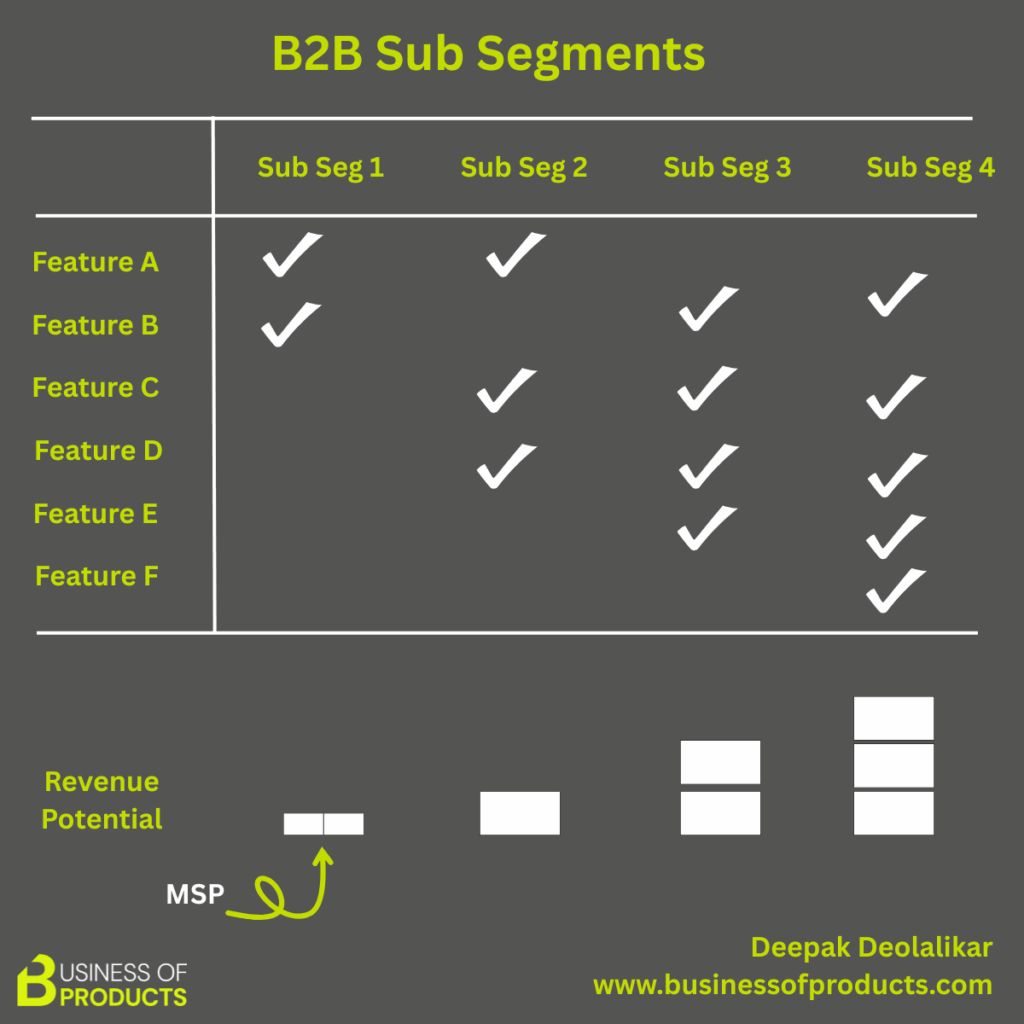Think beyond MVP: What's your MSP?

Let’s talk product strategy. Specifically for an early startup like mine.
You’ve probably heard of MVP (Minimum Viable Product) and maybe even RAT (Riskiest Assumption Test). These are all about validation—finding out what to build, who to build it for, and whether they’ll pay for it. But once you havethat validation, a new question pops up:
Now what?
You’ve identified the right customer segment. You know the core value you’re providing. But when it comes to building the product—what exactly should you ship?
That’s the question we’ve been wrestling with at Ziply, and it’s what led me to invent a new-ish term: MSP – Minimum Sellable Product. (OK, it’s not mine but very rarely used)
Let’s take an example
Imagine you’re setting up a new office space for your team. You have a long list of things you want—custom desks, breakout rooms, soundproof pods, a fancy coffee machine, branded signage, etc.
But to open the office and start using it, you don’t need everything on day one. You prioritize:
Desks and chairs
Reliable internet
Power backup
Basic kitchen setup
Once the team is in and working, you start layering in the extras—soundproof rooms, design upgrades, espresso machines.
Same goes for product development.
At Ziply, our broader goal is clear: help B2B companies build brand awareness and generate quality leads through internal and external influencers. But that goal can be solved in many ways. Content creation tools, engagement analytics, influencer marketing , ad management—tons of directions to go.
But we can’t do it all. Not yet.
I can build it all and wait till it all works and hope to get revenue.
Or I can build something small and start generating revenue.
Enter the Minimum Sellable Product
MSP asks a very simple but sharp question:
What is the smallest, usable slice of product that a customer sees value in—and will pay for?
In B2B, this gets trickier. Some enterprise customers expect the basics—SSO, audit logs, reporting, SOC2—before they even consider your product. As a startup, you probably can’t serve these needs on day one. Hold off on them.
So you look for the early adopters—the ones who can live without the bells and whistles but care deeply about a specific pain.
That’s where MSP comes in.
How We Applied MSP at Ziply
At Ziply, we saw five big problem areas to solve:
AI-powered content creation
Social amplification
Partner advocacy
Influencer marketing
Gamification and engagement tracking
Eventually, we want to tackle them all. But we started with social amplification—because:
B2B companies have very few options in this space
Most already have a content workflow
Amplification through employees and partners is the missing link
This was our MSP. We launched with just that—and some users said, “This is great, but content creation is hard.”
Cool. That’s the next layer we will build.
Build What You Can Sell
MSP reframes how you think about product decisions.
❌ : “What will make customers happy?”
✅ : “What will someone pay for right now?”
Of course you want to solve customer problems. But in B2B, those problems are endless. You have to slice the solution space into chunks you can actually deliver and monetize.

Let’s say you are building an AI-powered finance system. There are so many modules to build : G/L, A/P, A/R, tax,Auditing, cost accounting, forecasting, reporting and treasury.
Start with the one module that gets you paid and opens doors. e.g. AI powered forecasting.
How to find your MSP:
How do you know what should be that minimum set? It’s a bit of discovery and trial and error.
-
List all your features you desire in your product
-
Cut the ones that customers already have workarounds or can do today
-
Cut the ones that won’t unlock budget i.e tablestake features
-
Keep the one that solves a painful, unsolved, high-priority problem. This is key.
It should be compelling to the customer i.e provides more value than they expect, there are no workarounds or solutions in the market, and this is super important to them. All 3 conditions are important.
Sometimes it is not just one thing that is sellable. You may have to connect 2-3 things to make it minimum sellable. For example, let’s say my product provides the ability to create social content. What do you do with the content? Cut and paste to Linkedin or X? That’s cumbersome. So you need to build publishing via API. What about tracking links for leads. If the value proposition is to track leads then you have to include the ability to track call to actions across your posts.
I keep asking the question, what can the customer live without. Rest I keep.
And that’s my MSP.
That’s your wedge into the market.
Get paid. Then expand.
Focused Shipping = Faster Learning
MSP isn’t about cutting corners. It’s about making tradeoffs that serve both your customer and your runway/traction. It’s about momentum, not perfection. When you focus on what you can sell, you build tighter. You learn faster. You stay alive.
Next time you’re ready to build, don’t just ask “Is this viable?”
Ask: Is this sellable?

